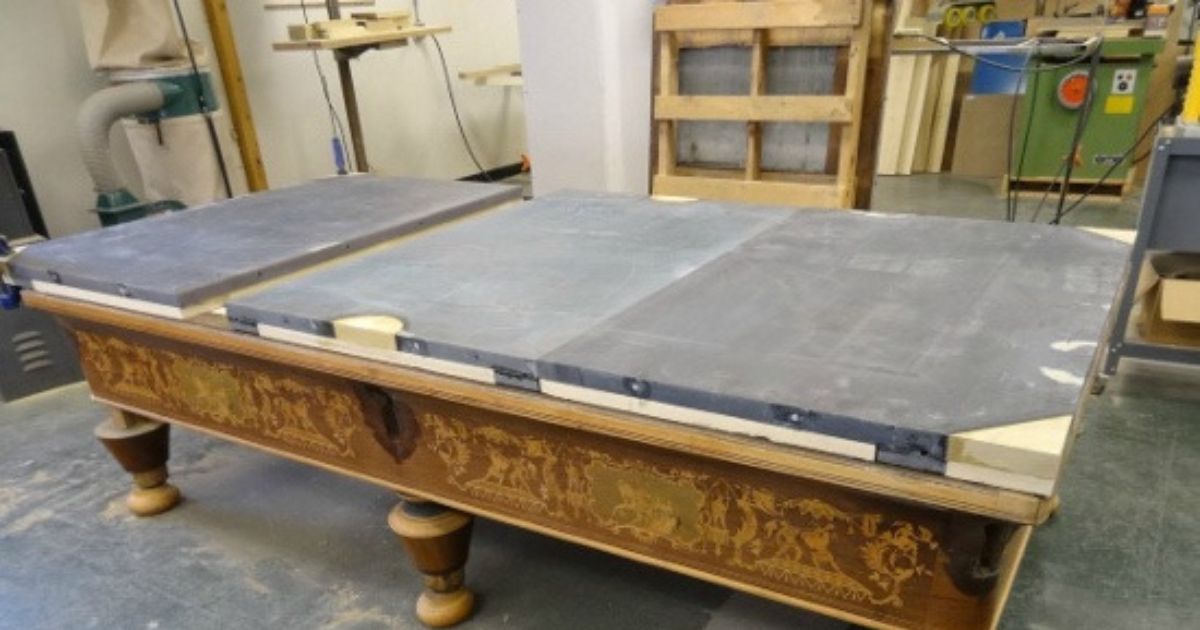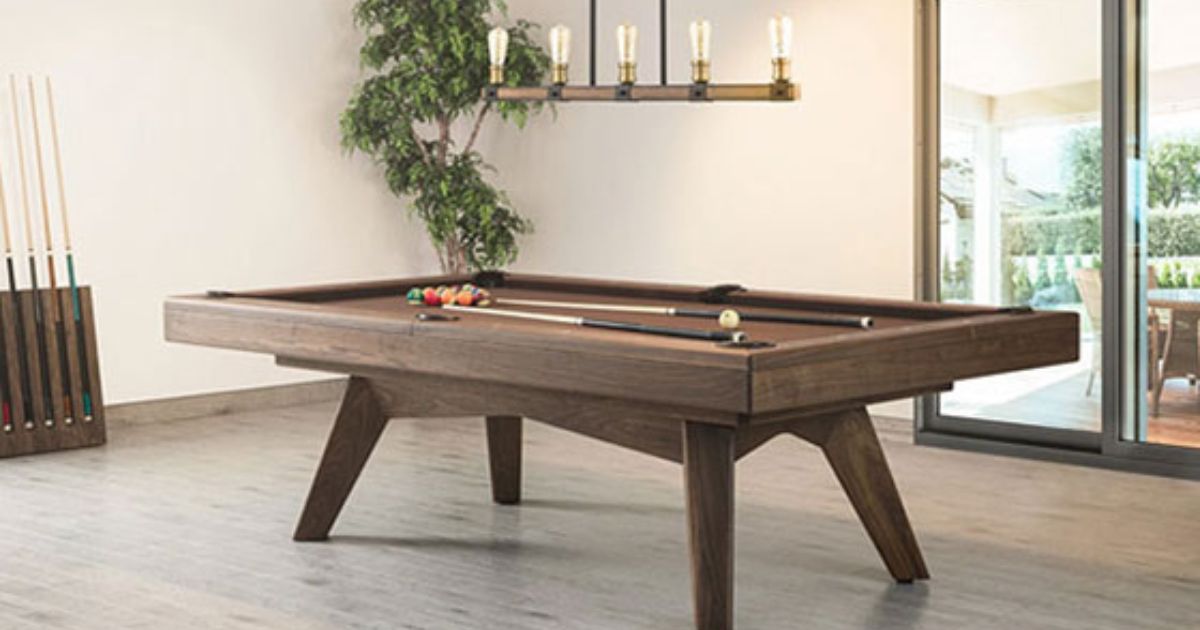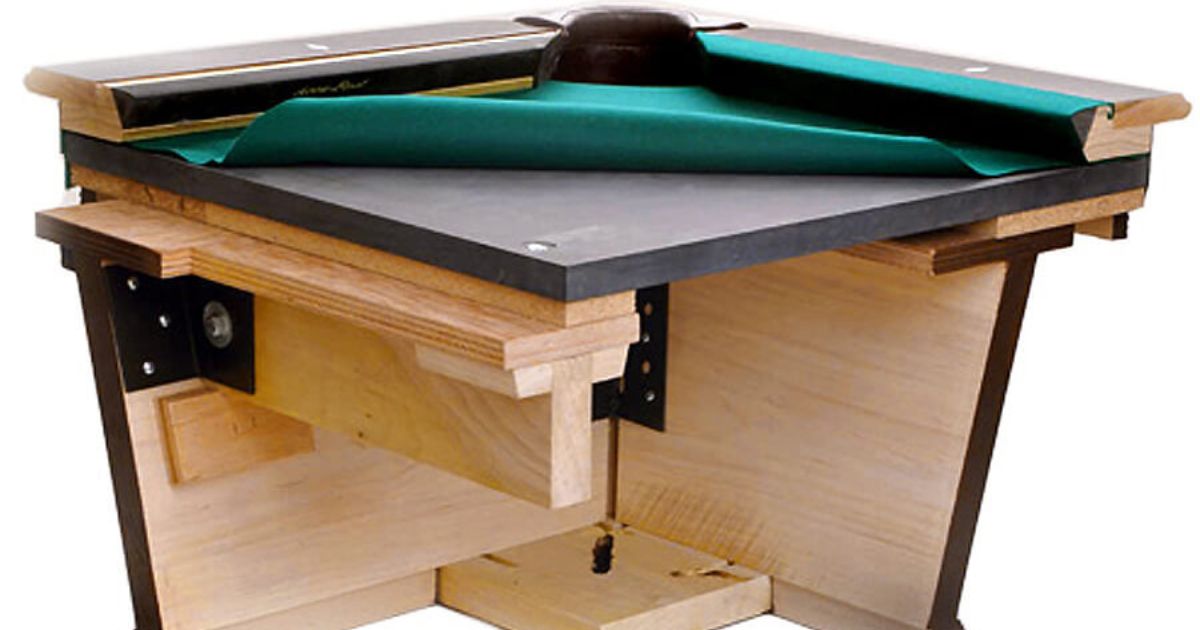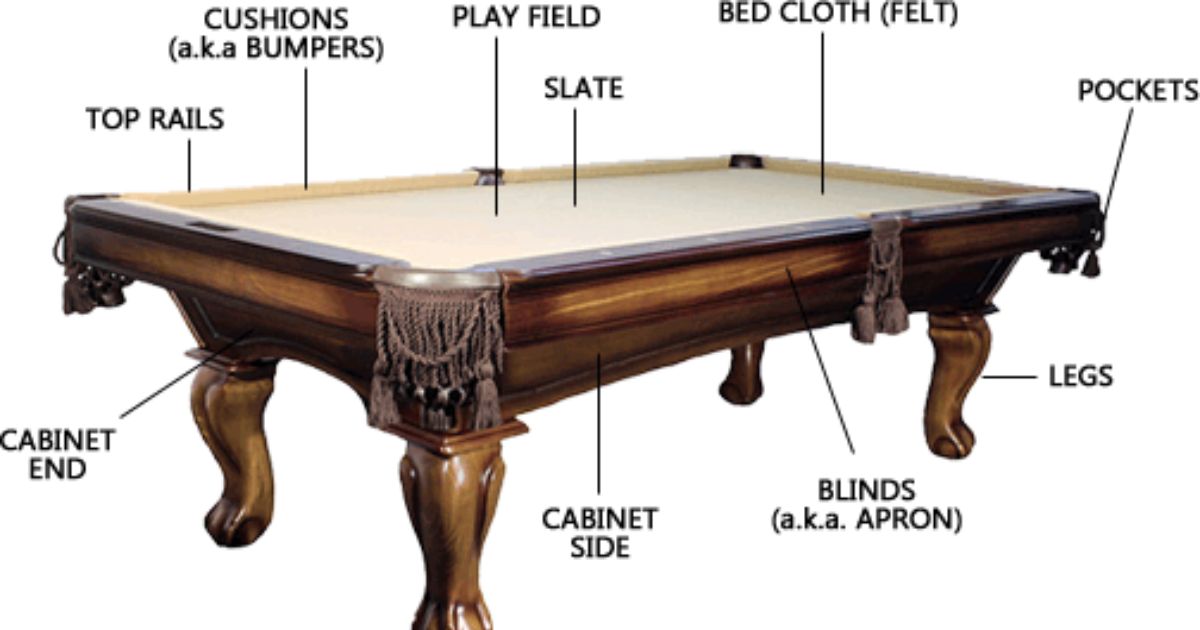How Much Does A Pool Table Weigh? Pool Table Weight Charts
Key Takeaways
| Table Size | Weight of Wood – Slate (kg) | Weight of Wood – Slate (lbs) |
| 6-foot | 82 – 227 | 180 – 500 |
| 7-foot | 125 – 317 | 275 – 700 |
| 8-foot | 145 – 454 | 320 – 1,000 |
| 9-foot | 204 – 590 | 450 – 1,300 |
| 10-foot | 272 – 680 | 600 – 1,500 |
| 12-foot | 363 – 1,134 | 800 – 2,500 |
How Much Does A Pool Table Weigh?
If you are looking around to bring home a pool table after purchasing or move your favorite pool table to another room, you may wonder: how much does a pool table weigh? Pool table weights can range from as little as 80 kg for a 6ft MDF table to 800kg or more for some of the larger slate bed pool tables.
Here are the weight charts of all sizes for both wooden pool tables and slate pool tables to help you find out the exact heavy numbers:
Wood Pool Table Weight Chart
| Table Size | Approx. Weight (kg) | Approx. Weight (lbs) |
| 6 Foot Table | 82 | 180 |
| 7 Foot Table | 125 | 275 |
| 8 Foot Table | 145 | 320 |
| 9 Foot Table | 204 | 450 |
| 10 Foot Table | 272 | 600 |
| 12 Foot | 363 | 800 |
Slate Pool Table Weight Chart
| Table Size | Approx. Weight (kg) | Approx. Weight (lbs) |
| 6 Foot | 227 | 500 |
| 7 Foot | 317 | 700 |
| 8 Foot | 454 | 1,000 |
| 9 Foot | 590 | 1,300 |
| 10 Foot | 680 | 1,500 |
| 12 Foot | 1,134 | 2,500 |
3 Factors Affecting Pool Table Weight?
Despite many constructing components, some factors significantly affect pool table weight as follows:
1. Slate or Wood
Most modern pool tables use slate, a type of rock with good qualities which can make a fantastic, long-lasting pool table playing surface. The thickness of slate normally accounts for 60-70% of pool table weight. Most typical tables have a 1-inch slate bed. For simpler travel, slate tables usually come in one large piece or three separate pieces. Tables with one-piece slate beds will typically be ¾ inch thick, whereas 3-piece tables will have a 1-inch slate. The weight of 1-inch pcs is different from the ¾ inch pcs.
On the other hand, pool tables also can use wood instead of rock or slate. It is a type of hardboard manufactured from various wood fibers pressed together with glue (MDF). This option is a good choice if you have a tight budget or you want a light pool table that is easy to move. Even the largest home pool tables can be made to weigh no more than a few hundred pounds with these materials.
2. Pool Table Size

Pool table size also can determine how heavy a pool table is. The weight of a slate pool table will, of course, be affected by its size. Pool tables come in a variety of sizes, including 7, 8, 9, and oversize 8 feet. A 7-foot slate pool table weighs approximately 700 pounds, whereas an 8-foot slate pool table weighs approximately 850 pounds. A 9-foot slate pool table is around 1,000 pounds in weight.
3. Pool Table Structure

Depending on the materials used for the pool table bed, the surrounding materials will be different. To properly sustain the weight of the rock, the surrounding construction for slate tables must be composed of relatively strong, supportive materials. As a result, hardwoods such as oak are frequently utilized to construct the table’s legs and frame.
A typical in-home 4′ x 8′ birch pool table with 5-inch hardwood rails, rubber bumper cushions, drop pockets, and a 3-piece, 1″ slate bed, for example, would weigh around 700 pounds. The average weight of an 8-foot table is between 700 and 1,000 pounds, with newly made tables being lighter on average.
On the other hand, the weight of MDF tables will be affected more by the surrounding materials than by the weight of the wood bed. These tables are frequently less expensive and lighter than slate tables. Because the frame must withstand less weight, lighter materials such as plywood, aluminum, or even some types of toughened plastic are used. The average weight of these tables is between 100 and 300 pounds.
Related post: How To Measure A Pool Table? 4 Pool Table Dimensions
FAQs
Why Is It Important To Know The Weight Of The Pool Table?
It is hard to make sure that you put your pool table in a fixed place without moving to somewhere else. Knowing your pool table weight can help you prepare a proper plan to relocate it or even find suitable materials to change any parts if needed
What Is The Average Pool Table Weight?
A pool table’s weight might differ significantly. A tiny 6ft wood (MDF) pool table weighs 180 pounds (80 kilograms), while a 10ft wood table weighs 600 pounds (270 kilograms). The heavy slate bases for slate pool tables, on the other hand, make them significantly heavier. These range in price from 500 pounds (225 kilograms) for a small 6-foot slate pool table to 2500 pounds (1130 kilograms) for a 12-foot 1-inch thick slate competition table.
How To Move A Pool Table?
Preparing your space to accept such a massive new addition will assist prevent scuffing and damage to your floor, as well as make it easier to move your table around in the future. Using rubber-lined pool table feet or laying it on a thick, hefty rug can protect your floor by being attached to the legs of your billiard table. As a precaution, don’t put heavier tables on hardwood floor planks that could crack over time from the pressure and weight of a tournament-size table.
Conclusion
To recap, how much does a pool table weigh is the frequently asked question when intending to buy a pool table. As all of the components mentioned, a pool table’s weight is mostly determined by the pool table’s bed material, dimensions, and structure.

Dave Pearson
Dave Pearson, the world's leading pool entertainer, is renowned globally as the ultimate exhibition player.
Boasting 20 world records endorsed by the prestigious Guinness Book of World Records, Dave established a legendary history in the sport industry.

